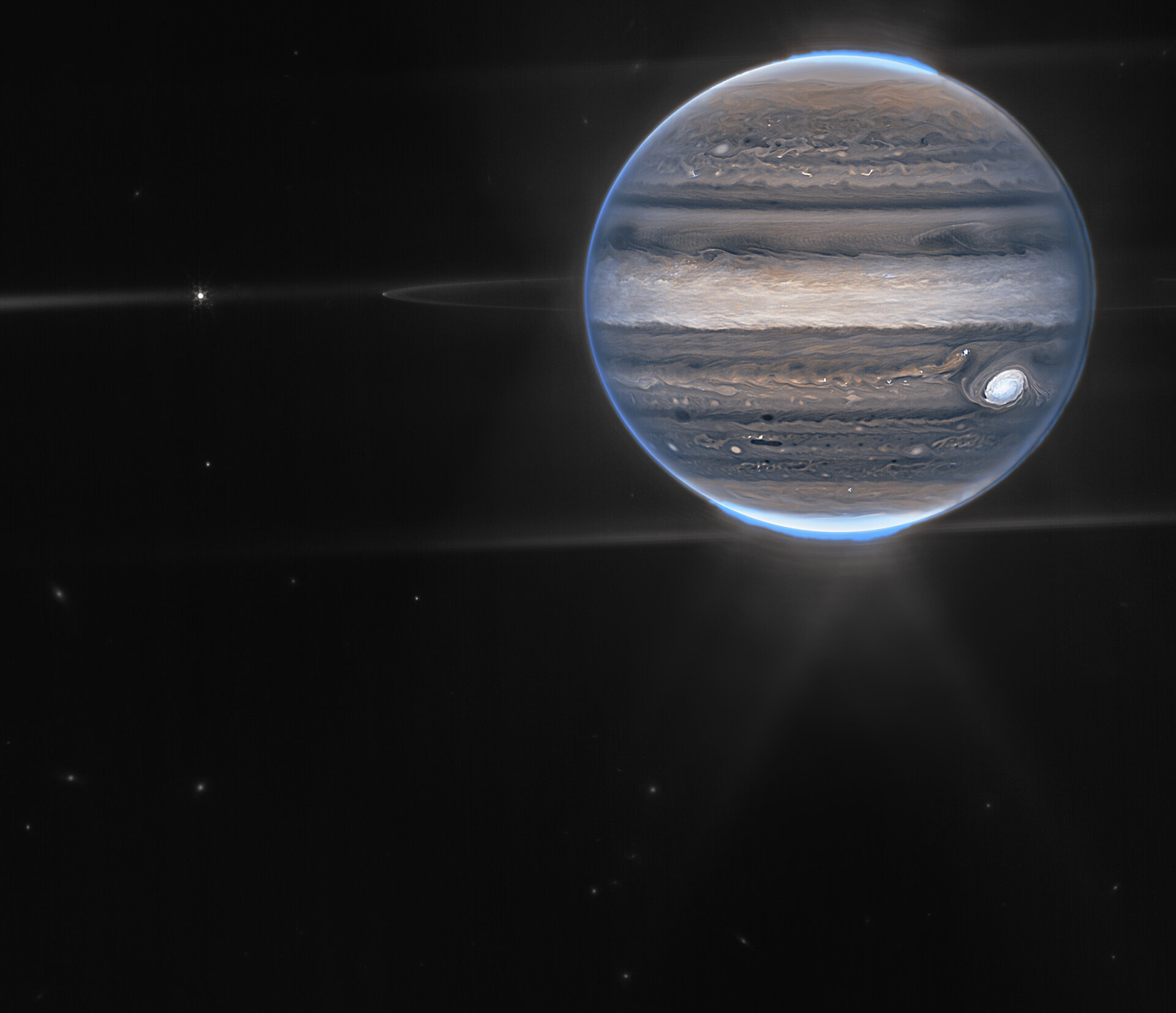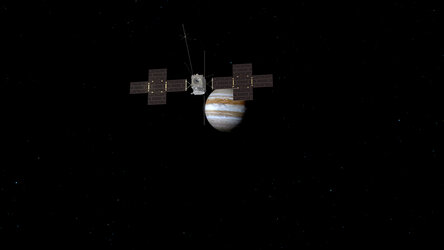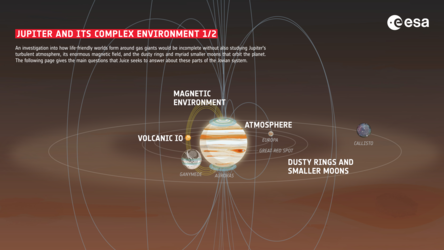Jupiter and its complex surroundings: What will Juice reveal?
As the name suggests, a strong focus of ESA’s Jupiter Icy Moons Explorer (Juice) mission is to explore the subsurface oceans of Jupiter’s icy moons. But an investigation into how life-friendly worlds form around gas giants would be incomplete without also studying Jupiter itself, its turbulent atmosphere, its enormous magnetic field, and the dusty rings and myriad smaller moons that also orbit the planet.
Juice will build upon discoveries made with NASA’s Galileo and Juno missions to reveal more about Jupiter than we’ve ever seen before. New findings will be made with Juice’s ten state-of-the-art-instruments, including cameras, spectrometers, radio-science experiments and sensors. Additionally, an experiment called PRIDE will use Juice’s telecommunication system with ground-based radio telescopes instruments to precisely determine the spacecraft’s position and velocity.
Being the biggest planet in the Solar System by far, Jupiter is a great archetype for the Solar System gas giants, as well as for the many gas giants known to orbit other stars. This means that by studying it, we can better understand how all gas giants form and change over time. In particular, by observing Jupiter’s unique atmosphere, magnetic environment and system of moons and dusty rings – and how these all work together – Juice will help us understand how habitable places can arise in Jupiter-like systems.

Jupiter’s atmosphere
Jupiter’s ever-changing atmosphere has been a source of curiosity since the Solar System’s most famous storm – the churning Great Red Spot – was first glimpsed in the 17th century. Juice will use its unique instruments to answer questions such as: What is the weather and climate like on Jupiter? How does an atmosphere work when there is no solid surface? What could be making Jupiter’s upper atmosphere so unexpectedly hot?
Since arriving at Jupiter in July 2016, NASA’s Juno mission has been orbiting the gas giant every 53 days, capturing stunning high-resolution snapshots as it goes. Juice will complement Juno by taking a more global view, continuously watching Jupiter as a whole system to monitor how its ever-changing atmosphere and auroras evolve over time, from minutes to days to years. Exploring how Jupiter changes with time can reveal the processes that shape the physics and chemistry of this archetypal atmosphere, and could one day enable us to generate robust forecasts of the Jovian weather and climate.
When we look at Jupiter, we see light reflected from colourful clouds – the distinct coloured bands, the intricate swirls, the Great Red Spot. These clouds form in Jupiter’s lower atmosphere, the weather layer. Juno has been exploring the region going downwards from these cloud decks, into Jupiter’s interior.
Juice, on the other hand, will tackle the atmosphere upwards from the cloudy layers, all the way up to the ionosphere and auroras; it will do this using four instruments that each looks at a different wavelength of light to probe how temperatures, wind patterns and chemistry are changing in this never-seen-before part of the atmosphere.
Juice will reveal how waves, energy and material move between Jupiter’s lower, middle and upper atmosphere. Jupiter’s atmosphere receives energy from outside (the Sun) and from inside (internal heat), and Juice will help us understand how the interaction between these two energy sources shapes Jupiter’s climate. With Jupiter being a template for extrasolar worlds, if we can get to grips with the Jovian climate, we could better understand exoplanets and their potential for hosting life.

Juice’s entire arsenal of instrumentation will also tell us more about the Great Red Spot. Although it has been raging for hundreds of years, we can see from Earth that this huge storm is shrinking and starting to interact with other storms. To really understand this new phase of existence, Juice will look at how the storm changes over many years. Inside the Great Red Spot, gases are ‘cooked’ by ultraviolet rays from the Sun to form potentially unique molecules; Juice will use spectroscopy (looking at the wavelengths of light being absorbed and emitted by molecules inside the storm) to uncover the strange chemical processes taking place and the origins of those striking red colours.
Whilst the Great Red Spot shrinks, Jupiter’s second-largest storm – Oval BA, or the ‘Little Red Spot’ –is changing colour from white to red to pink and back again. Juice will also use its spectrometer to investigate why Oval BA changes colour and what the future could look like for this swelling storm.
Sometimes we see other marks on Jupiter – ‘bruises’ left behind by large objects such as comets and asteroids that collide with Jupiter on their journey through space. These atmospheric bruises are similar to airbursts created by large Earth impactors, such as the Chelyabinsk strike. When smaller space rocks hit Earth’s atmosphere, they burn up quickly as shooting stars before marking Earth’s surface. Just as these shooting stars would be difficult to capture in a single snapshot of Earth, so they are on Jupiter. Juice’s continuous observations of the gas giant will give us a better chance of seeing them – and learning how Jupiter’s atmosphere responds – than we’ve ever had before.
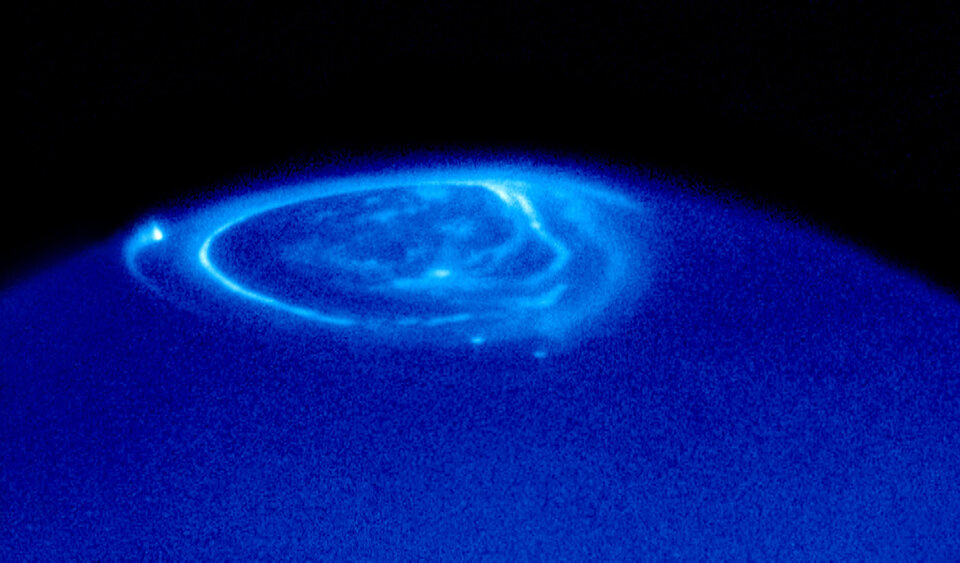
Another curious feature of Jupiter’s atmosphere is the auroras that light up the planet’s poles. Just like the auroras on Earth, these are caused by charged particles that are channelled along Jupiter’s magnetic field lines and collide with other molecules in the planet’s atmosphere. They look beautiful, but are a visible sign of chemical changes in Jupiter’s polar atmosphere. Juice will study the aurora to understand how the planet’s magnetic field and atmosphere interact over time.
These studies may provide answers to an age-old question known as the ‘energy crisis’ that asks why Jupiter’s upper atmosphere is much hotter than we can account for due to solar energy alone. Astronomers believe the auroral energy could somehow be transmitted from the poles to the equator, but the planet appears to spin too fast for this to be feasible. Juice will use three instruments to look at how Jupiter’s auroras and winds interact to understand how energy flows through Jupiter’s atmosphere.
This discussion of auroras, charged particles and magnetic fields takes us on to Jupiter’s magnificent magnetic environment.
Magnetic environment
Jupiter’s complex magnetic environment is one of the Solar System’s outstanding mysteries. The planet’s rapidly rotating metallic liquid hydrogen core generates a magnetic field, which is thought to be 20 times stronger than that of Earth, and one million times larger in volume.
Juice will study the region of space around Jupiter that is dominated by this magnetic field – the magnetosphere – to discover how the harsh environment shaped and continues to shape conditions on the icy moons.

Jupiter’s magnetosphere is filled with charged particles. In Earth’s magnetosphere, most of these particles come from the Sun, but in Jupiter’s, the biggest source is actually volcanoes on the planet’s fourth-largest moon, Io. The volatile moon’s volcanoes release around one tonne of sulphur dioxide every second. These become ionised and picked up by Jupiter’s fast-rotating magnetic field.
As Jupiter rotates, a doughnut-shaped region of charged particles has built up around the planet, in what is one of the most intense radiation environments in the Solar System. Jupiter’s fast rotation creates a powerful natural particle accelerator that causes the particles to release radio waves. Juice will observe and characterise the charged particles and their radio emission using a suite of sensors and probes, both from inside the doughnut and from a distance, to capture how Jupiter works as an overall space plasma system. What’s more, measurements of the accelerated charged particles will improve our understanding of fundamental physics.
Some of the charged particles reach Jupiter’s icy moons (Ganymede, Europa and Callisto), where they alter the moons’ atmospheres and surface composition. But the nature of these interactions remains a mystery.
As well as ‘normal’ auroras that surround the planet’s poles, there are also auroral spots where charged particles are channelled along magnetic field lines connecting Jupiter with its moons. Juice will observe these auroral spots in ultraviolet and infrared wavelengths to help us understand the magnetic interaction between the gas giant and its moons.

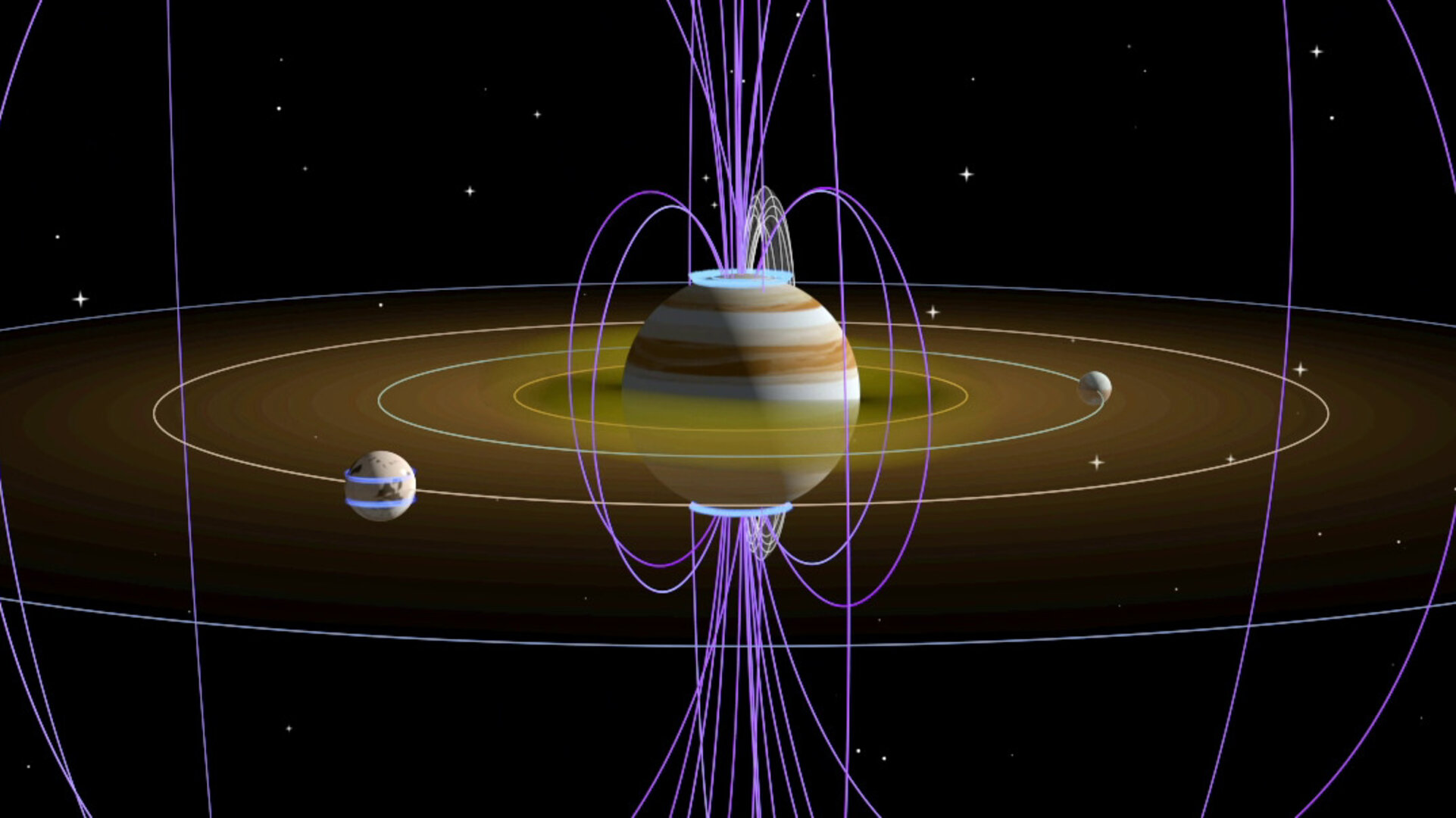
Access the video
Volcanic Io and Jupiter’s invisible rings
Aside from the large icy moons that Juice will get close to and explore in depth (Ganymede, Europa and Callisto) Juice will also observe the fourth ‘Galilean moon’ – eruptive Io – from a distance.
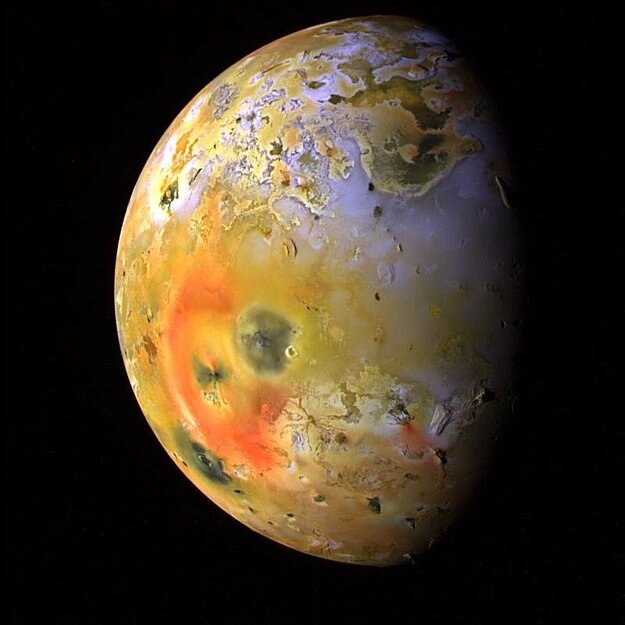
As the most volcanically active body in the Solar System, Io will be another target for Juice. On this fiery world, volcanoes soar up to around 18 km in height, and eruptions can last years. These eruptions blast out charged particles that are carried around Jupiter and towards Ganymede and Europa. Juice will monitor Io’s volcanic activity and investigate what its surface is made of.
Another interesting property of Io is its relationship with the orbits of Ganymede and Europa: for every orbit that Ganymede makes of Jupiter, Europa completes precisely two, and Io precisely four. It is likely that the three moons formed somewhere else around Jupiter and were captured into these stable orbits. Juice will help us understand how and why the moons’ orbits have changed over time.
In total, Jupiter is surrounded by almost 80 moons, as well as rings of tiny dust particles. Whilst Saturn’s rings shine loud and clear, it wasn’t until 1979 that Jupiter’s more subtle ring system was discovered by astronomers. The age of these rings is still unknown, but various processes in Jupiter’s fierce environment destroy small dust particles, meaning that something must be constantly replenishing the rings if they are to live for very long.
By imaging the rings in 3D from different angles, and analysing them in various wavelengths of light to find out what exactly they are made of, Juice will help us understand more about their physics and chemistry. It may be that Jupiter’s smaller moons Thebe, Amalthea, Adrastea and Metis are leaking dust into the rings – Juice will try to find out for sure. The spacecraft will also investigate how the orbits of the moons have changed over time; Amalthea is particularly interesting because we know that it cannot have formed in its current location, otherwise it would have melted.
How does this all come together?

Juice’s main goal is to characterise Jupiter’s icy moons as both planetary objects and possible habitats. But by observing Jupiter’s atmosphere, magnetosphere, and system of moons and rings, the mission will also reveal how different aspects of the planet’s environment affect one another. In this way, Juice will improve our knowledge of Jupiter as a unique planet and as a whole system.
With Jupiter being like a ‘mini solar system’, we will be able to apply this knowledge to our own Solar System and other planetary systems in the Universe, improving our understanding of how gas giants form and behave, and the potential for life to exist on their orbiting worlds. This knowledge will feed into ESA’s exoplanet monitoring programme, which currently consists of a trifecta of dedicated missions – Cheops, Plato and Ariel – complemented by the James Webb Space Telescope.














 Germany
Germany
 Austria
Austria
 Belgium
Belgium
 Denmark
Denmark
 Spain
Spain
 Estonia
Estonia
 Finland
Finland
 France
France
 Greece
Greece
 Hungary
Hungary
 Ireland
Ireland
 Italy
Italy
 Luxembourg
Luxembourg
 Norway
Norway
 The Netherlands
The Netherlands
 Poland
Poland
 Portugal
Portugal
 Czechia
Czechia
 Romania
Romania
 United Kingdom
United Kingdom
 Slovenia
Slovenia
 Sweden
Sweden
 Switzerland
Switzerland

























